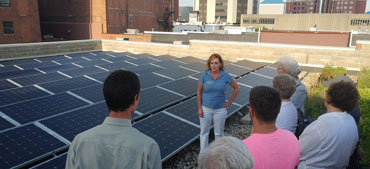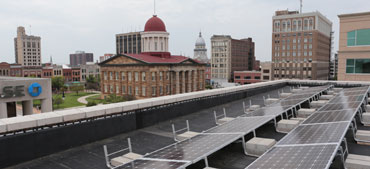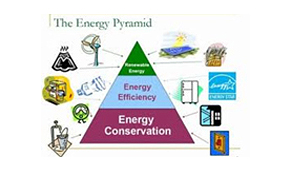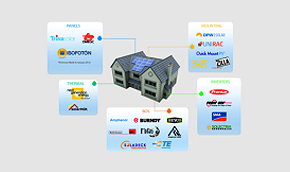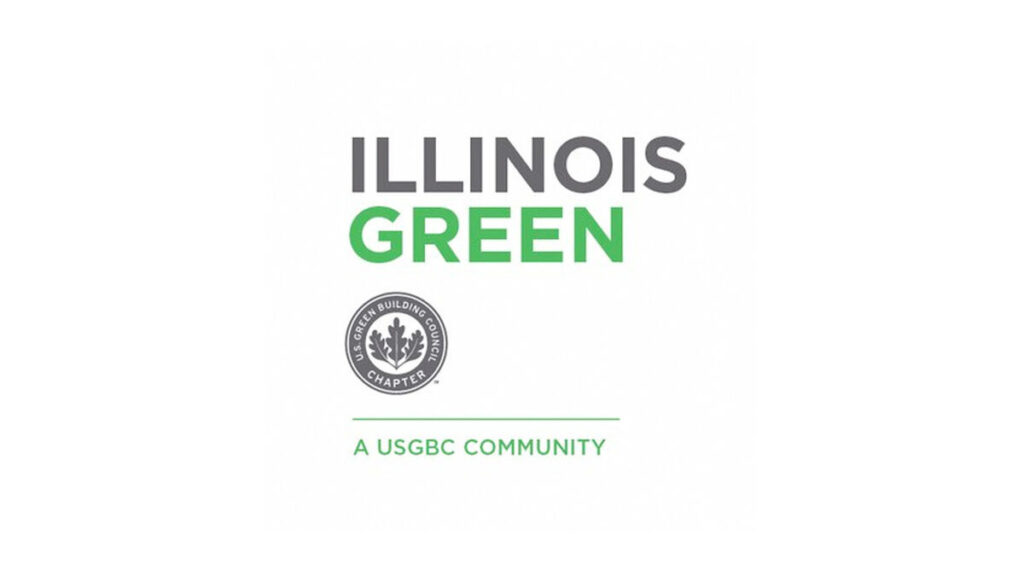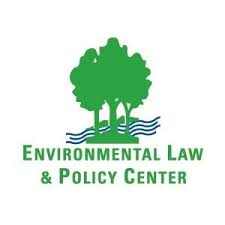If you’ve made it to the point of seeking out developers, chances are you’ve toyed with the idea of installing solar for a while. That said, there are still probably quite a few things you don’t exactly understand about the process. Specifically, you might be struggling with choosing the right solar developer.
While you can’t expect yourself to become an expert on renewable energy overnight, there’s one area of Going Solar with which you should certainly try to become familiar: precisely what makes a company the right (or wrong) solar developer for your situation.
It might sound like a tall order, but take a systematic approach and you’ll have an idea of exactly what to look for in no time.
Start by verifying legitimacy
Generally speaking, you don’t want a totally inexperienced solar developer creating your system, just like you wouldn’t want to hire a mechanic that knows nothing about cars. That much is common sense, but how can you ensure that you’re working with a company that’s worth their salt?
The first way is through certifications. In Illinois, any business installing solar must have their distributed generation (DG) certification from the Illinois Commerce Commission. Installers can qualify for this certification one of two ways:
- Receive installer certification from the North American Board of Certified Energy Practitioners (NABCEP) and gain lead experience on at least five projects
- Be an IBEW Journeyman with experience on at least three installations
It’s important to note that a developer doesn’t need their DG Certification, but the subcontractor handling electrical grid interconnection does. To check whether a prospective developer is working with a DG Certified subcontractor, simply ask for that subcontractor’s name and consult the ICC List.
There are a number of other industry certifications that a developer may have acquired, such as NABCEP Technical Sales and MREA Site Assessor. While these additional certifications aren’t required, they indicate that a developer is dedicated to providing the best possible service.
The next way to determine that a developer knows what they’re doing, is to simply ask. A reputable solar developer will be able to provide all sorts of items that support their abilities, including things like:
- Letters of recommendation
- A list of completed installs to visit in person
- Contact information for past clients willing to discuss their experience
- Customer reviews and testimonials
All of these things speak to a track record of success, and will give you some peace of mind that you’re working with a company that knows what they’re doing. Much of choosing the right solar developer simply has to do with whether you trust them as a partner.
Ask questions, then ask some more
One of the primary functions of solar developers is to educate potential clients about the project they’re considering. This means that a developer should never seem eager to close a deal until they’ve taken the time to thoroughly talk through any of your questions and concerns.
To make sure your developer not only knows what they’re talking about, but is also willing to explain the ins and outs of the industry to you, here are some questions you might consider asking:
-
How do the solar modules installed on my property ultimately produce electricity?
This is probably a topic you’ve already explored on your own. Still, asking your developer to outline this most basic of questions will give you an idea of how fully and comfortably they grasp the answer themselves. It will also let you gauge their willingness to have a dialogue on things that might seem rudimentary to them.
-
What type of module are you recommending to me, and why?
There are three different types of modules: monocrystalline, polycrystalline, and amorphous thin film. Monocrystalline modules are the most expensive to manufacture as each of the cells in these modules is cut from a single silicon ingot; they also happen to be the most efficient module type for climates that are both hot and cold, like in Illinois. A potential developer should be able to talk through the options with you, and explain why their recommendation is best.
-
What are the different inverter types, and which type do you recommend?
A developer might recommend one of three options to you as far as inverters go: microinverters, string inverters, or string inverters with DC optimizers. They likely use the same type for every project, and should be able to explain the advantages of that choice. For example, microinverters and string inverters with DC optimizers reduce the negative impact of shading, allow for monitoring the production of each module, and make troubleshooting significantly simpler.
-
What elements of my site evaluation prompted your system suggestions?
Prior to completing an analysis in which they recommend a system design, a developer will complete a site evaluation. During this evaluation, they will look at things like shading, the state of the roof, and the current electrical service (among others). The system design should reflect a holistic analysis of all the information gathered before and during this evaluation. If something doesn’t make sense to you, be sure to ask the developer why it’s included.
-
Are there currently financial incentives available for Going Solar, and will they be available indefinitely?
There are a number of incentives that those who invest in solar can currently enjoy. One of the largest of these is the Federal Tax Credit, which will drop to 26% in 2020, then 22% in 2021, and will go away entirely for residential customers in 2022 (unless it is renewed by Congress), while dropping to 10% for commercial installations. Another major financial incentive is something known as Renewable Energy Credits (RECs); this is a highly involved state program that takes a bit of brain power to wrap your head around. Make sure your developer explains it carefully. Finally, Modified Accelerated Depreciation (MACRS) is an incentive available only to business owners, in which they have the option to depreciate the cost of their solar project over a front loading five year period.
Don’t be afraid to make a prospective developer work to win your project. The most important thing is that you feel comfortable making the investment; that can only happen if you feel you’ve received a thorough education.
Make sure the models are realistic
Murphy’s Law dictates “anything that can go wrong will go wrong,” and while that’s almost never the case, the opposite generally isn’t true either. That is to say, life rarely goes exactly the way you want it to. There are bumps in the road, unexpected difficulties, and the nature of reality is hard to predict.
While everyone knows these universal truths, they tend to be thrown out the window when it comes to things like cost models. Often, developers will adopt a sort of “best case scenario” mentality when formulating these models. This can make them hard to trust. Fortunately, there are a handful of ways you can evaluate exactly how realistic a model is. These methods will ensure you’re choosing the right solar developer.
-
Verifying production estimates
A developer should be able to explain in detail how they calculate production estimates; they should also be able to provide some sort of data that verifies their estimates. For example, the developer may verify their estimates based on the performance of existing clients’ systems, or they may check them against the NREL PVWatts Calculator. This calculator is a free service; even as a consumer you can use it to verify the estimates you’ve received.
-
Accounting for degradation
There’s simply no way to avoid the fact that your module will degrade each year. This happens no matter which type your developer uses for your project. Most models account for a degradation rate of .005% each year; some models, however, do not account for degradation at all, which will significantly skew a cost model over time.
-
Electricity Escalation Factor
Utility rates will increase over time, the question is simply how much. Developers always account for this increase when providing a cost model, but not always accurately. A reasonable average usually falls somewhere just below the 4% mark for an annual average increase. Even so, some developers will bump that up to 5% or even 7%. Obviously, this gives consumers a contorted expectation. You can contact your utility and ask for their average increase in the last 25 years to ensure a reasonable figure is being used.
-
Utility Policy
One of the most important facets of an accurate cost model is a clear understanding of utility policy. That is to say, you should make sure you have a firm grasp on how your specific utility handles solar. For example, Ameren and ComEd in Illinois offer something called retail net metering. This means that any energy you overproduce and feed back onto the grid is credited to your account at the same rate at which you’d be charged for it. However, they also use an “annual reconciliation date” where any of those banked kilowatt hours are wiped clean. Each utility handles these points differently. In turn,a developer must research your utility’s policy and model it correctly in order to provide a valid payback analysis.
It can feel like a lot of work ensuring that you’re choosing the right solar developer for your project. The good news is that once you’ve put in these hours upfront, the hard work is over. You’ll be able to sit back and enjoy your system for decades while your developer takes care of the rest.


